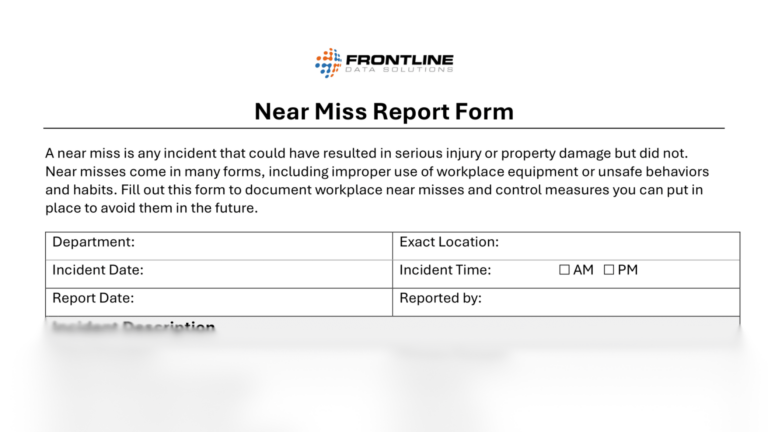Investigating near misses is one of the top preventative safety measures you can implement. It allows you to learn from past mistakes and fix issues before they cause incidents. Teach your workers the value of this process by covering the points in this near miss toolbox talk.
Free template!
Download this free near miss report form to document these incidents as quickly as possible after they happen. Doing so is essential for a successful toolbox talk session discussing near misses and their impact.
Near miss toolbox talk overview
To stay safe at work, we need to be able to recognize issues and fix them before they cause an incident. In this toolbox talk, we’ll answer the following questions as part of our ongoing near miss toolbox discussion:
- What exactly is a near miss?
- What should you do when you see a near miss?
- What can we learn from near misses?
Once you understand what a near miss is, it’ll be easier for you to spot them when they happen and report them. That’s the only way we’ll be able to learn from them and move forward as a team.
Near miss definition and examples
A near miss is any incident that does not result in injury or damage but can in the future. Examples of near misses include:
- Dangerous equipment malfunctions
- Improper use of equipment
- Close calls between operators and pedestrians
- Hazardous material spills
These incidents can be the result of human error, environmental factors, or safety hazards. A comprehensive near miss toolbox talk session helps you learn how to spot potential incidents.
Reporting near misses toolbox talk
When you see a near miss happen, the first thing to do is make sure that the hazard is under control. Once you’re sure no one’s in the line of fire, then you need to immediately report what you witnessed. This can be a crucial point during a near miss toolbox discussion.
Here are the details you should share (if you can):
- When and where the incident happened
- What happened
- Who was involved
- Who else saw it happen
These details will make it easier for the safety team to start investigating the incident. You’ll never get in trouble for reporting an incident, so it’s very important that you share what you see.
Near miss takeaways
Just because near misses don’t result in injuries or damage doesn’t mean they’re not worth investigating. In fact, they’re a great source of information not just for the safety team, but for other departments as well. Also, these discussions are key elements of any effective toolbox talk, specifically focusing on near misses.
And that’s because there’s so much we can learn from near misses, like:
- Sources of safety hazards
- Operational inefficiencies
- Policy and/or procedure inconsistencies
- Training gaps
- Continuous improvement opportunities
Near misses help us avoid setbacks by showing us what might happen if we don’t make a change. If everyone on the team keeps an eye out for them, then we’ll be able to improve all areas of performance as part of our near miss toolbox approach. That way, everyone’s safer and more productive regardless of which department they work in.




